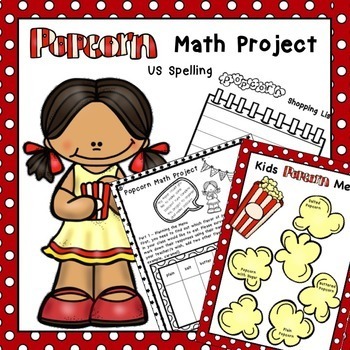Popcorn Day Math Project Based Learning, Kitchen math, Cooking Measurement US
- PDF
Also included in
- Check out this bundle of all of my differentiated math investigations for grade 4, 5 and 6 students! Students use operations, create timetables and graphs, work with money and use other math skills.Each investigation resource contains, curriculum links, teacher’s notes, example answers, investigatioPrice $30.00Original Price $43.00Save $13.00
Description
Includes a fun differentiated popcorn math project that requires grade 4, 5 and 6 students to use higher order thinking skills. It's a great project for popcorn month!
It serves as more than a thematic activity and requires students to use math skills to prepare and make popcorn (if you wish).
Students work individually or in groups on differentiated math black line masters. There are two versions plus some challenge questions. NOTE: This can be done for fun and without making popcorn if the last black line master and the challenge questions black line master are discarded.
Black line masters include:
Part 1
*Planning the menu - gathering data and tallying
*Kids Popcorn Menu (colour and black and white options)
Part 2
*Altering the recipe - operations and measurement
*Popcorn recipe (microwave and stove top options)
Part 3
*Creating a shopping list - operations and measurement
*Shopping list
Part 4
*Making the Popcorn - mass and volume
If you decide to make popcorn then you will need to supply ingredients when needed (popcorn kernels, oil, butter, sugar, salt and anything else you wish to use for toppings).
There are links to American, English and Australian curriculum documents.
Find out how this product is gamified here.
This resource is in US English and is letter paper size. Click here for AUS UK English.
This product is available in one of my bundles. Click
here to view the bundle.
You may also like






